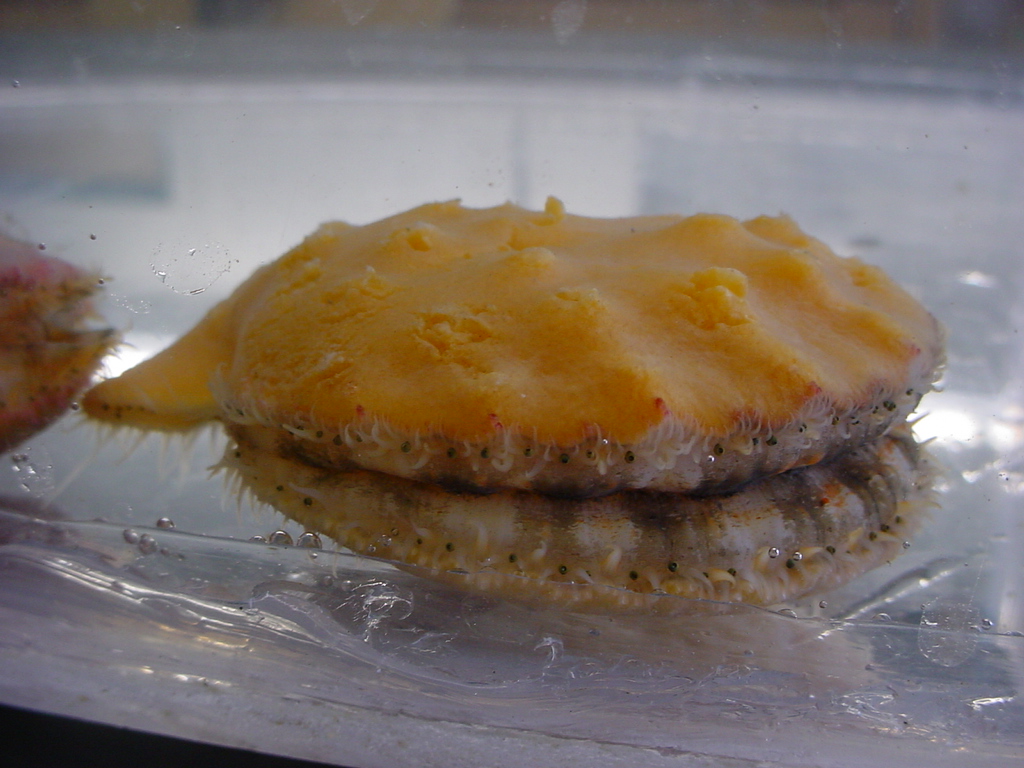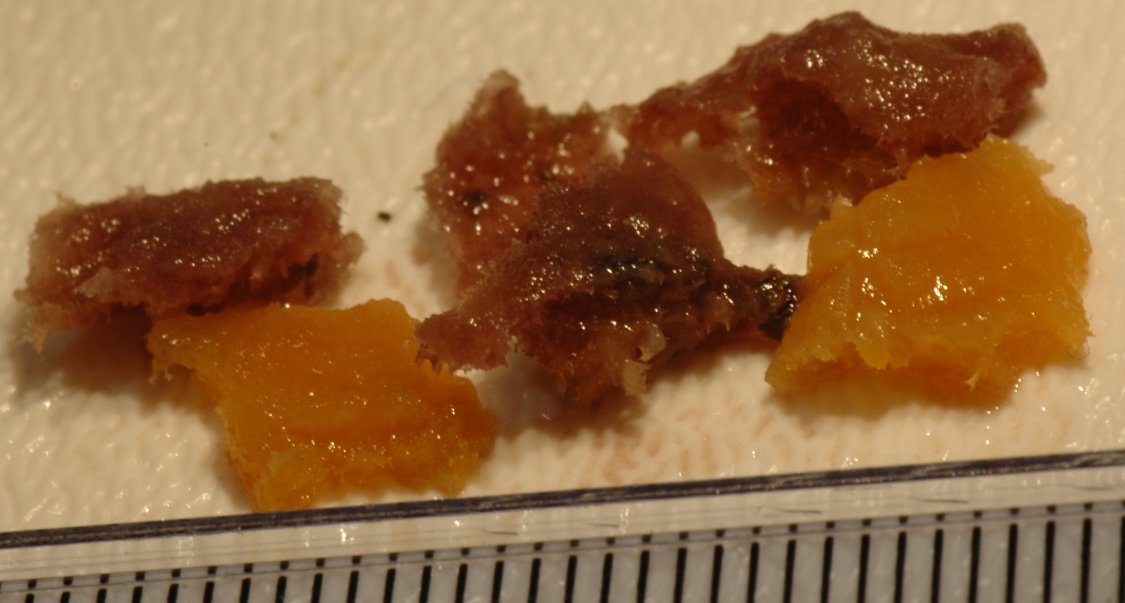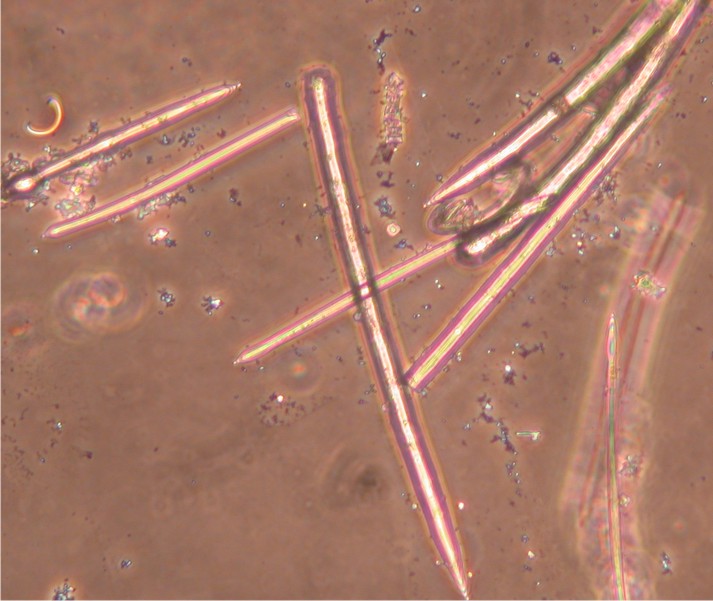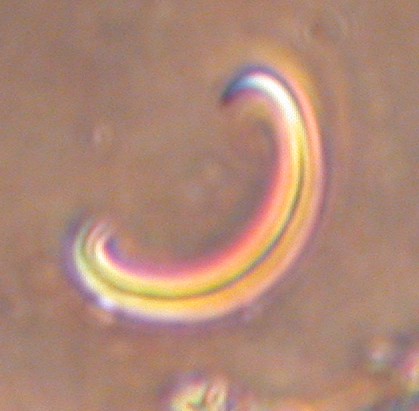Myxilla incrustans (Esper, 1805-14)Common name(s): Rough scallop sponge |
|
| Synonyms: Ectyodoryx parasitica, Myxilla parasitica |  |
| Phylum
Porifera
Class Demospongiae Subclass Ceractinomorpha Order Halochondriida Family Myxillidae |
|
| Myxilla incrustans sponge on a Chlamys hastata scallop. | |
| (Photo by: Dave Cowles) | |
How to Distinguish from
Similar Species: The
other sponge commonly found encrusting scallops in this area, Mycale
adhaerens, is yellow-brown to violet and has styles
290-360 microns
long. M. W. de Laubenfels also said that Mycale
adhaerens has a coarser structure, and when torn it
reveals prominent
fibers thicker than thread, which Myxilla incrustans does
not have
(Ricketts
et al., 1985)
(see picture)
Geographical Range: Pacific coast and Japan. Most references to it are for the Pacific Northwest so presumably it is much less common elsewhere.
Depth Range:
Habitat: Lives on scallops such as Chlamys hastata and Chlamys rubida.
Biology/Natural History: This is the most common sponge found encrusting scallop shells in the Rosario area. The sponge seems to only encrust the surface and not bore into the shell at all. Sponge predators include the nudibranchs Cadlina luteomarginata, Dialula sandiegensis, and Archidoris odhneri; and another nudibranch, Discodoris heathi, has been observed clinging to them. The symbiosis is likely mutualistic. If one of the major predators of the scallop, the seastar Evasterias troschelii, encounters the scallop (and the scallop does not swim away) it often turns away if it touches the sponge; likely in response to some secretion or to the spicules from the sponge. The sponge also appears to make it more difficult for the seastar's tube feet to adhere to the scallop. If the sponge is removed from the scallop and the scallop is prevented from swimming, it is readily captured by the seastar. The scallop will also swim from predators of the sponge, such as Archidoris spp, so the sponge is benefited as well. The swimming scallop may also help carry the sponge into areas with clean water and good currents, and help prevent fouling of the sponge.
Research by Kirt Onthank and Thomas Ewing at the Walla Walla University Rosario Marine Laboratory indicates that sponge encrustation deters scallop predation by octopus Enteroctopus dofleini and Octopus rubescens, both of which may be important scallop predators in our area. Sponges which live on the scallop are also less vulnerable to predation by nudibranchs such as Anisodoris nobilis and Archidoris montereyensis.
| Return to: | |||
| Main Page | Alphabetic Index | Systematic Index | Glossary |
References:
Dichotomous Keys:Kozloff 1987, 1996
General References:
Harbo,
1999
Kozloff,
1993
Morris
et al., 1980
Ricketts
et al., 1985
Scientific Articles:
Bloom, S., 1975. The motile escape response of a sessile
prey:
a sponge-scallop mutualism. J. Exp. Mar. Biol. Ecol. 17:
311-321
Farren, H.M. and D. A. Donovan, 2007. Effects of
sponge and barnacle
encrustation on survival of the scallop Chlamys hastata.
Hydrobiology
592: 225-234
General Notes and Observations: Locations, abundances, unusual behaviors:
The large majority of Chlamys rubida and
especially Chlamys
hastata scallops found subtidally on Sares Head are encrusted
with
this sponge.

These are torn sponge fragments. Myxilla incrustans
is
yellow and Mycale
adhaerens
is purple. Note the more stringy appearance of the Mycale.
Scale is millimeters.
Photo by Dave Cowles, July 2005.
| Photos of spicules taken from Myxilla incrustans encrusting a Chlamys hastata scallop. Spicules isolated by Brooke Reiswig July 2006. Photos are from a phase-contrast microscope. | ||
 |
 |
 |
| Styles
(a type of megasclere).
A sigma
also appears at the
top left.
We measured styles from 160-195 microns long. |
Sigma
(a type of microsclere).
We measured sigmas from 15-20 microns long. |
Tridentate isoanchor
(a type of microsclere).
This one is wrapped around a style.
We measured tridentate isoanchors from 14-17 microns long. |
Authors and Editors of Page:
Dave Cowles (2005): Created original page